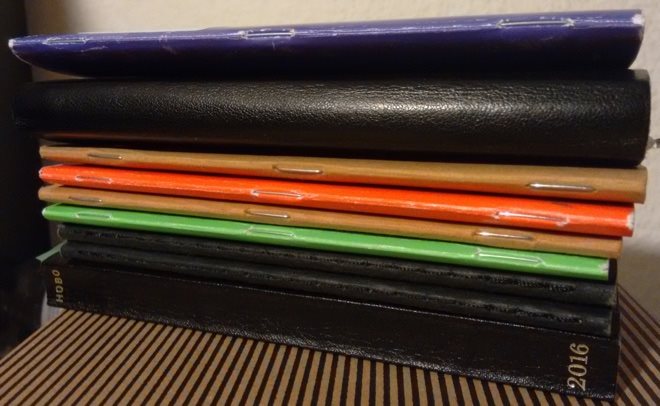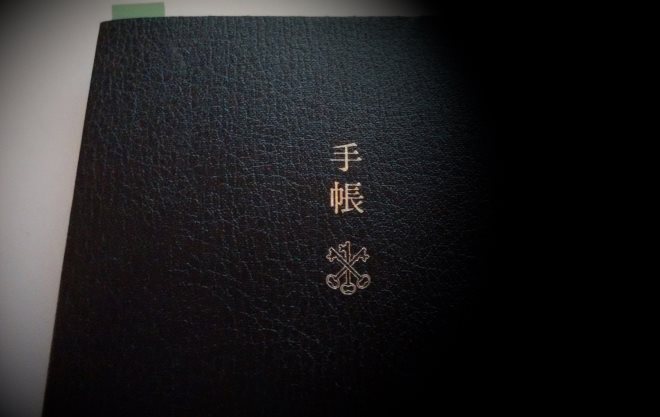Aug 3, 2016

Every newcomer to the wonderful world of pen addiction quickly notices that there are wet and dry ballpoint pens (as in “pens with a ball”). Some of these pens are marketed as ballpoints, some as gel pens, some as rollerballs. The distinction the manufacturers make isn’t always clear, Schneider’s “Viscoglide” pens for example are marketed as ballpoints, but don’t use traditional ballpoint ink. Here is what I have learned over the years about different types of ink.
Ballpoint ink
With ballpoints I mean traditional ballpoints like the BIC Cristal. The ink in those pens is of high viscosity, because it is oil-based, which makes the ink waterproof. The color comes from dyes that color the liquid which makes it less resistant to bleach compared to pigment-based ink. This YouTube video about the manufacturing of the BIC Cristal provides a glimpse into ink making.
Rollerball ink
Rollerballs contain ink of low viscosity, which provides an even color application, very similar to fountain pen ink. Like fountain pen ink it is water-based. In contrast to fountain pen ink the color in most models is not provided by dyes, but by pigments (polymer molecules) suspended in the liquid, which makes the ink waterproof and oftentimes bleach resistant. A prime example of this type of pen is the Uni-ball eye.
Gel ink
Gel inks are, like rollerball inks, water- and (usually) pigment-based. Viscosity-wise they are in between ballpoint and rollerball inks. There are high-viscosity gel inks like Pilot Acroball or Uni-ball Jetstream refills. Some pens marketed as ballpoints use high-viscosity gel ink, like Parker or the before mentioned Schneider refills. Some gel inks are of lower viscosity, for example Pentel’s EnerGel and Pilot’s G2 inks. They feel smoother and produce a more consistent line, but have a longer drying time.
Please note: Statements about waterproofness and bleach-resistance are best taken with a grain of salt, the exact ink composition varies from manufacturer to manufacturer. The consistency of the color application also depends on the paper used. The paper in the picture above is a smoother one, which means that it is coated and provides less friction for the ball to roll than less heavily coated paper, which explains the poor performance of the otherwise very reliable Acroball on the particular paper (Avery Zweckform notizio).
Comments
Aug 3, 2016

I talked about why the Hobonichi Techo doesn’t work for me and that I use pen and paper to plan:
[…] the development of long term plans still happens on paper and oftentimes I copy appointments from my calendar into my notebook and mix them with tasks to plan the day.
That got me thinking about how differently I use certain tools (Google Calendar in this case) and my pocket notebooks. The processes of making appointments, shuffling them around and writing them down to remember doesn’t involve much thought, neither creative thought nor reasoning why the appointment is there and why I should keep it. It’s just filing. My calendar is an inbox, not a planning tool. The same goes for my email account. Things arrive but are not integrated into my day, my life and not necessarily affiliated with my long term plans and goals. That is why “living in my inbox” and giving the attention to each newly arrived item that my smartphone notification seems to demand is dangerous.
In order to make calendars, to-do lists, email accounts and other types of inboxes (even notebooks if I use them as inboxes) useful to my life, extra steps have to be taken. Here we arrive in the area of real planning, which involves not only the question of where things should go, but why they should go there. Is this task, appointment or email important to my life? If so, how important is it? Can it wait? What do I have to do in order to achieve my long term goals? What is the initiative I personally have to take? These questions can’t be answered with a few clicks, they are deeply personal and demand a flexible tool to handle them. This tool is my notebook, which is where the thinking starts.
I maybe should have tried to integrate the Hobonichi deeper into my planning, instead of trying to replace my inbox with it. For planning however I prefer a more flexible form than a page per day.
Comments
Aug 2, 2016
In November 2015 I decided to try something new … a paper planner! I picked the widely recommended Hobonichi Techo. The planner doesn’t disappoint, it’s exactly the right format to take everywhere, offers thin but fountain pen friendly paper and looks good on almost every desk. But now in August 2016 I have to assert that I gave up on it.

When I started using the Techo I thought it would be a good fit because I already carry a pocket notebook with me, which eliminated the need to send myself emails to write things down. I wanted to de-digitalize my planning as well, which worked reasonably well for a few months. The reason why I stopped using the Techo in May was not that I gave up on note taking, but that using a paper planner is cumbersome in comparison to using Google Calendar, at least for me.
Google Calendar is on my smartphone, therefore always in my pocket, instead of just in my bag, it syncs with my computer, enables color coding without the need to carry multiple pens, allows for shared calendars, event invites, reminders, recurring events and most importantly: Multiple views. Having a weekly or monthly view to “zoom out to” is very valuable when a quick glance on the schedule is needed, for example at the start of the week or when making appointments. That said … the development of long term plans still happens on paper and oftentimes I copy appointments from my calendar into my notebook and mix them with tasks to plan the day.
The learning: Try different things, find out what works and if it does, use it, if not, go back to established working ways before maybe trying something else in the future.
Comments
Aug 2, 2016
The wonderful Notebook Stories writes about some vintage notebooks from her collection.

Most of my notebooks are ones that I’ve bought new and filled with my own notes and sketches. But I also occasionally succumb to my weakness for collecting other people’s used notebooks when I see them at flea markets or on eBay. Here’s a few that I’ve picked up along the way.
I’ve picked up a vintage notebook of eBay myself which I will be writing about shortly. Sadly it only contains vacation packing lists from an UK person somewhen around 1950, not as exciting as Nifty’s finds.
Comments



